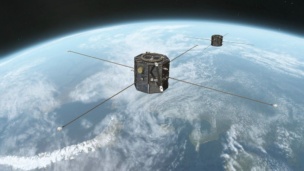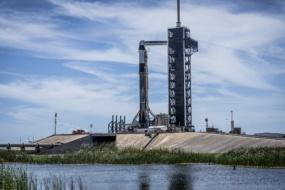The Trump administration’s new directive to clear bureaucratic obstacles in front of space companies has been well-received: “This is a great day for US commercial space,” cheered Commercial Space Federation President Dave Cavossa.
But what might happen soon? And what’s about to enter process hell? Payload spoke to attorneys and compliance experts at rocket companies to figure out what’s coming.
450 or fight: Most attention is focused on Part 450, which licenses rocket launches and spacecraft reentries. Those rules were written by the first Trump administration at the behest of industry, but failed to actually streamline the process when implemented.
Trump’s executive order calls for a wholesale rewrite, with a few key focus areas:
- Flight termination vs. system safety: Rather than a more laborious and qualitative review of how the vehicle functions, the EO asks regulators to consider waiving regs if regulators are confident a vehicle can be destroyed before endangering the public.
- Less duplication: Across the EO, regulators are ordered to look at redundant analyses—whether spaceport environmental reviews need to be repeated by rocket-makers, or the FAA must approve of air-launched rockets as both airplanes and space vehicles.
- For reentry vehicles, more ways to prove they can make it home safely: Companies like Varda Space Industries have struggled to win the FAA’s approval of their analyses, and this would give them more ways to make their case. “Nobody is trying to change the level of safety that applies to these activities,” Caryn Schenewerk, an attorney specializing in these rules, told Payload. “It’s just how you go about proving to the FAA that you are achieving it.”
Attorneys expect the EO to move this rule-writing effort to the front of the line, but changes will still require months of drafting and public comments.
Attenuated: One key portion of the EO calls for a review of Part 450 rules that are “are too attenuated”, or loosely connected, to a vehicle’s actual launch or reentry. Lawyers say that phrasing is intended to cut out anything not directly related to protecting public safety, with one example being lengthy payload reviews.
However, that could limit FAA efforts to regulate space debris caused, for example, by abandoned upper stages exploding on orbit. That line likely “forecloses the FAA’s previously sought-after authority regarding orbital-debris mitigation and de-orbiting requirements,” Charles Horikami, an attorney at Aegis Space Law, wrote in an analysis.
Novelty shop: A new plan to authorize “novel space activities” is coming after an aborted effort under the Biden administration. Today, virtually every space activity that isn’t launch, satcom or EO lives in a bit of a regulatory gray area. New business models are coming online from in-space servicing and manufacturing, to resource extraction, to commercial LEO destinations—even NASA’s plan for commercial nuclear power plants on the Moon. Experts expect this plan to move fast, particularly because it is exempted from the complexities of human spaceflight, and wind up in the Office of Space Commerce (OSC).
People are policy: Speaking of, the OSC will now report directly to the Secretary of Commerce, not the head of NOAA, and a new space deregulation czar will be appointed to advise Secretary of Transportation (and acting NASA Administrator) Sean Duffy. But can the administration find qualified people to lead OSC or take on the deregulation job, and get them in place in any reasonable time frame?
Impactful: Environmental reviews are the bane of every major industrial project, but that’s one reason why it’s hard to see how directives to reduce environmental reviews will be meaningful without action by Congress. The Trump administration has given more discretion to cabinet officials on how to administer environmental reviews and exempt certain activities, but the National Environmental Policy Act—and the legal challenges it allows—remains the law of the land, and state environmental laws would still need to be followed.
One telling line in the EO suggests all spaceport development projects could seek exemptions from the Endangered Species Act on national security grounds.
The order also tells officials to notify the Department of Justice about state laws concerning spaceport development that conflict with federal laws. Paul Stimers, a partner at Holland & Knight, told Payload that reference to the DOJ is a “shot across the bows” of state and local government.
Competitors: The order is framed as “enabling competition” in the US industry. Attorneys we spoke to, however, didn’t see the order affecting competition between US companies—or explicitly benefiting SpaceX at the expense of its rivals. The order is better understood as enabling the US space industry to remain competitive on a global stage.
“This executive order is very consistent with the first Trump administration’s focus on space as a critical element for national security and economic competitiveness worldwide,” Stimers said.




